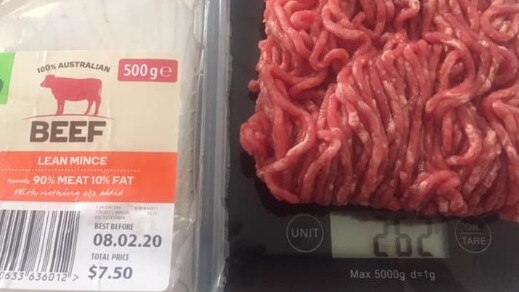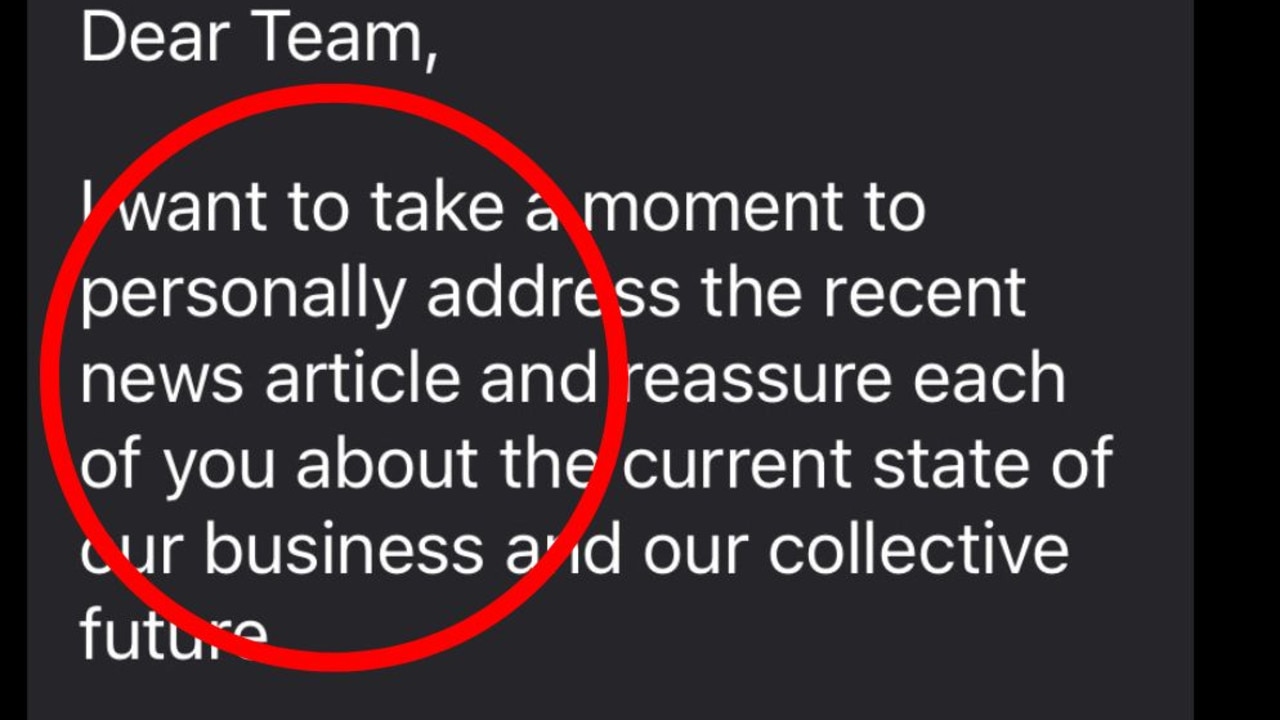Meaning behind secret supermarket symbol
A furious Woolies customer kicked off about her 500g package of beef mince containing 262g of meat. A small symbol on the packet might be to blame.

Retail
Don't miss out on the headlines from Retail. Followed categories will be added to My News.
A Woolworths customer’s complaint over the amount of beef mince contained in what was supposed to be a 500g packet has drawn attention to a little-known code commonly found on supermarket products.
But while the meaning of the tiny “e” symbol next to the weight marked on the package is a revelation to many, the supermarket says it’s not to blame for the error.
Queensland mum Mandy Smith purchased a 500g package of beef mince from her local Woolworths store recently, and paid $7.50 for the packet.
But when she later weighed the meat on her kitchen scales at home, she discovered a big problem – the mince actually weighed just 262g.
She took to Facebook to slam the company alongside photos of the packet.
“Seriously Woolworths … I have been buying this mince like this for a while, and not cheap due to trying to cut out fat. I weighed it today and there is less than 300 grams in a supposed 500g pack!” she wrote.


“I paid $7.50 for 500 grams and got this! And yes my scales are fine I use them daily by (the) way. How many people are you ripping off (by) including the packaging weight?”
However it has since been pointed out that supermarkets put a letter “e” next to the weight on products — like the now-infamous packet of mince — stands for estimate.
This means the amount doesn’t necessarily have to be the same on the packet, but it’s supposed to be close to it.
It’s called the “average quantity system” (AQS), and according to the National Measurement Institute (NMI), it’s “an internationally agreed method of determining the size or quality of prepacked articles with ‘consistent normal content’”.
“This means it provides confirmation of the measurement or quantity of goods in the package, being sold by measure,” the NMI website reads.
“AQS provides a 97.5 per cent assurance that goods are the correct quantity within the prescribed tolerances.”
The rules of the system state a “small number” of packages can exceed a “tolerable deficiency” — for prepacked products labelled 300 - 500g that’s 3 per cent of the total weight — but none can be over or under by more than twice the prescribed tolerable deficiency.
A Woolworths spokesman told news.com.au the company took Ms Smith’s claim seriously.
“We want our customers to shop with the confidence they’re getting what they’re paying for,” the spokesman said.
“We’re aware of the customer’s claim and have been looking into it with our meat production partner.
“We have a range of checks and balances in place throughout production to help ensure our products comply with trade measurement.”
It is understood Woolworths products are audited regularly and checked for their compliance to net weight requirements, with commercial scales regularly recalibrated.
Woolworths advises customers who are concerned about the weight of a products to return the item for a refund.

Originally published as Meaning behind secret supermarket symbol


